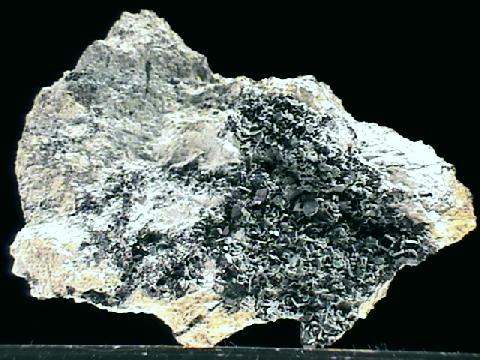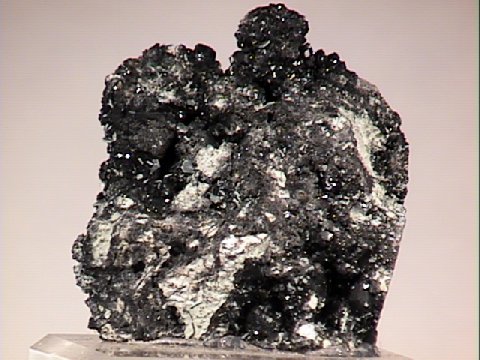 THE
MINERAL PEROVSKITE
THE
MINERAL PEROVSKITE
- Chemical Formula: CaTiO3, Calcium Titanium Oxide
- Class: Oxides and Hydroxides
- Group: Perovskite
- Uses: A minor ore of titanium and rare earth metals and as mineral specimens.
Specimens
Perovskite is an increasingly economically important, and in some rocks a rather common, mineral. It is sought after for its rare earth metal content. Often perovskite is enriched in cerium, niobium, thorium, lanthanum, neodymium and other rare earth metals. Rare earth metals are becoming rather attractive for prospectors due to their growing value to industry. The titanium derived from perovskite is recovered as well.
Crystals of perovskite appear as cubes, but this is deceiving. Perovskite is actually pseudocubic (or "falsely shaped" in a loose translation from the Greek). It is really orthorhombic in symmetry, but its structure is very close to isometric. The titaniums and oxygens compose a framework structure in which TiO6 octahedrons are connected at each corner to other TiO6 octahedrons. If the connections were at perfect 90 degree angles then the structure would be isometric. However the large ions, such as calcium and some rare earth metals that are needed to balance the formula, are too large to fit comfortably between the octahedrons. This causes a bending or twisting of the octahedrons and a distortion of the structure to orthorhombic symmetry. But the structure is still close to being isometric and it can therefore create crystals that are close to being cubes. Specimens can remind one of darkly colored cubes of galena. But galena's better metallic luster, greater density and perfect cleavage prevent anyone from permanently confusing the two.
Perovskite is named for a Russian mineralogist, Count Lev Aleksevich von Perovski. The mineral was discovered and named by Gustav Rose in 1839 from samples found in the Ural Mountains. Now it is a well known and recognized as a common mineral in aluminum and silica poor rock types such as nepheline syenites, carbonatites, kimberlites and melilites as well as some contact metamorphic marbles.
PHYSICAL CHARACTERISTICS:
- Color is variable from black, brown, gray, orange to yellow.
- Luster is submetallic to adamantine, greasy or waxy.
- Transparency: Crystals are opaque.
- Crystal System is Orthorhombic (pseudocubic).
- Crystal Habits include commonly pseudocubic striated crystals. Also found bladed, reniform, granular and massive.
- Cleavage is imperfect in one direction.
- Fracture is conchoidal.
- Hardness is 5.5
- Specific Gravity is 4.0 (below average for metallic minerals)
- Streak is white to gray.
- Associated Minerals include
chlorite,
talc,
serpentine,
melilite , andradite, nepheline, sphene and leucite. - Notable Occurrences include the Slatoust district,
Ural Mountains, Russia; Sweden; Crestmore Quarries, Riverside County and the Diablo Range, San Benito County, California; the Bearpaw Mountains, Montana and Magnet Cove Arkansas, USA; Zermatt, Switzerland; Gardiner complex, Greenland; Jacupiranga, Sao Paulo, Brazil; Val Malenco, Lombardy, Italy and the Eifel District, Germany. - Best Field Indicators are crystal habit, luster, associations, striations and locality.











